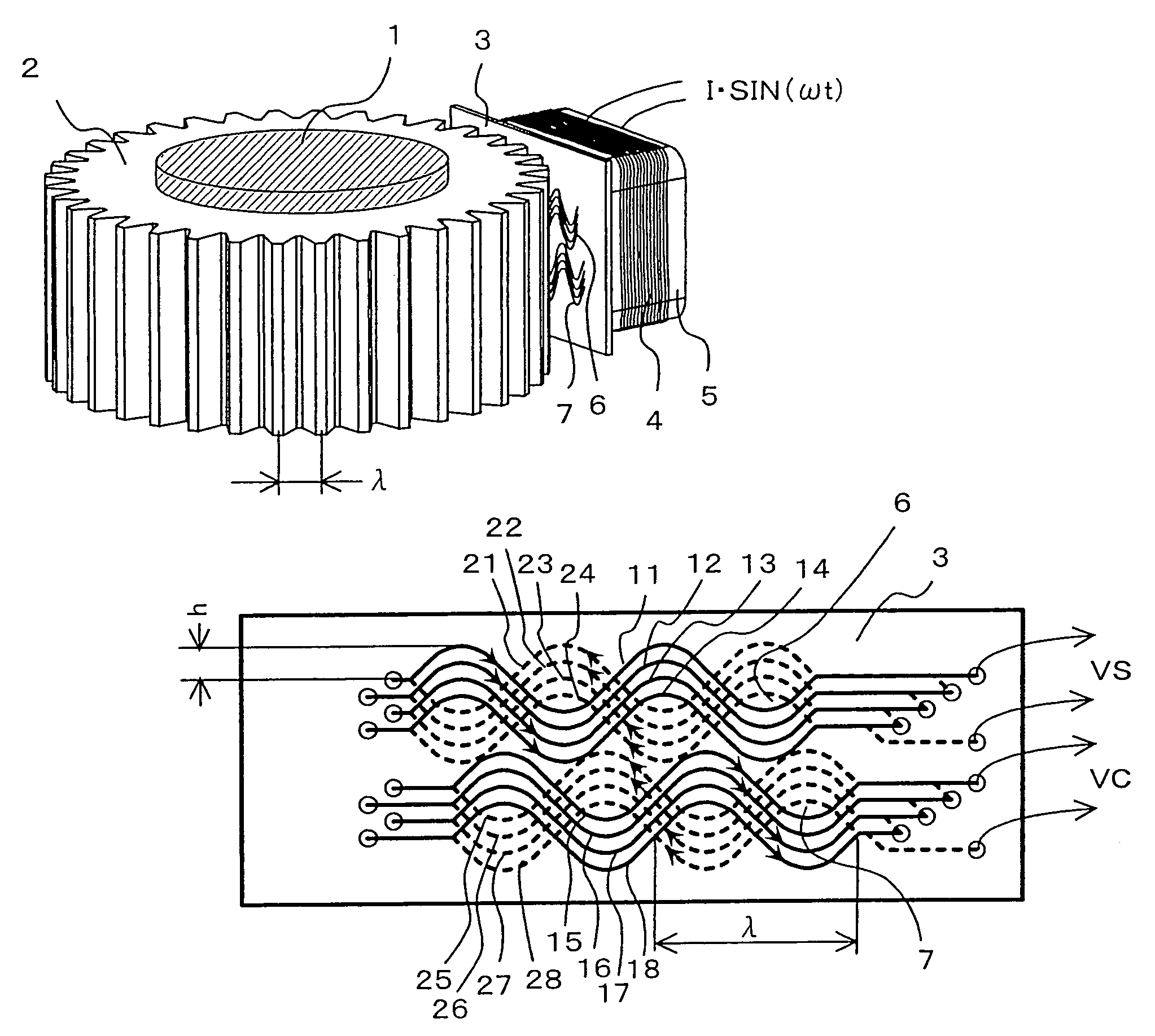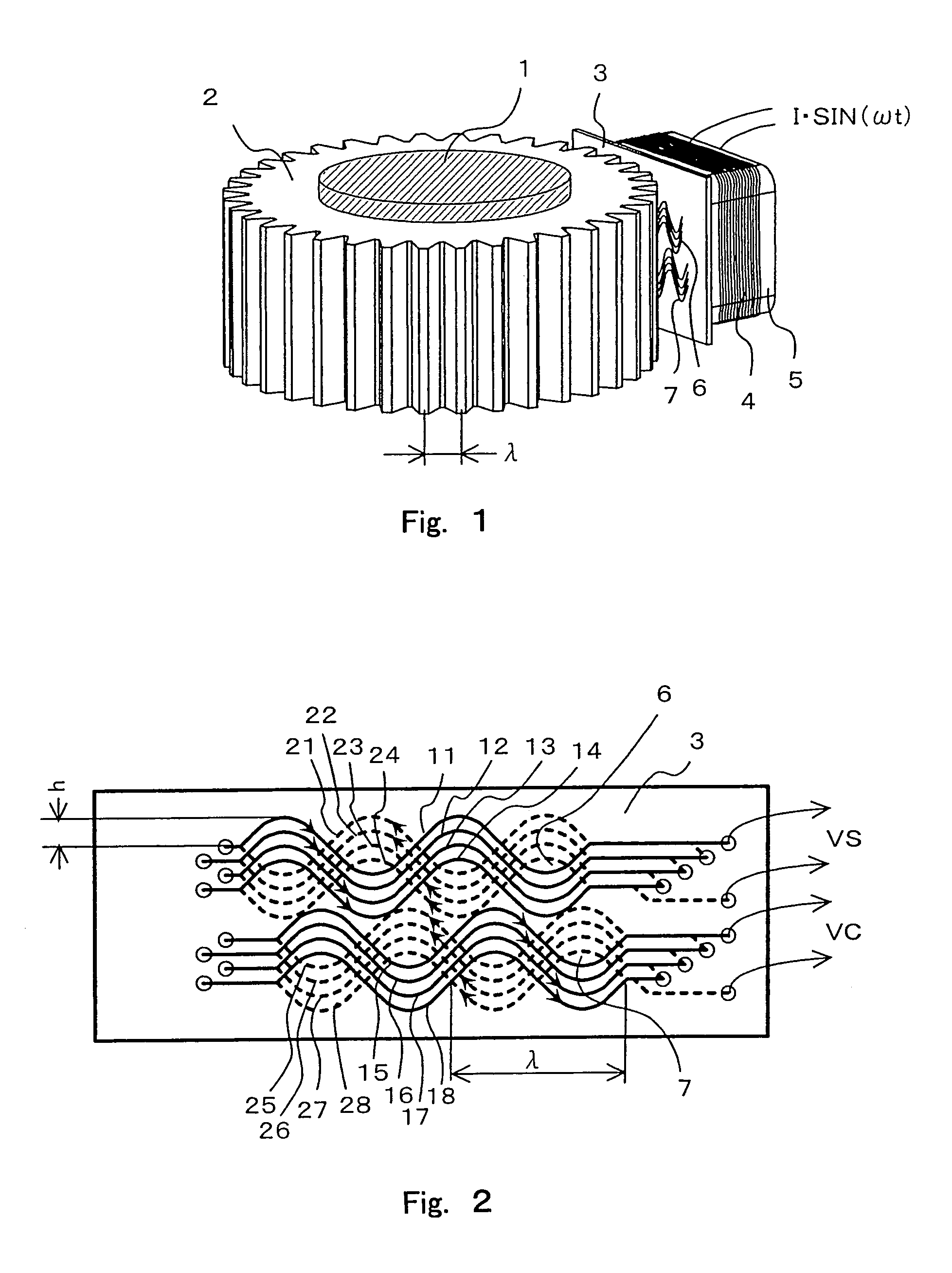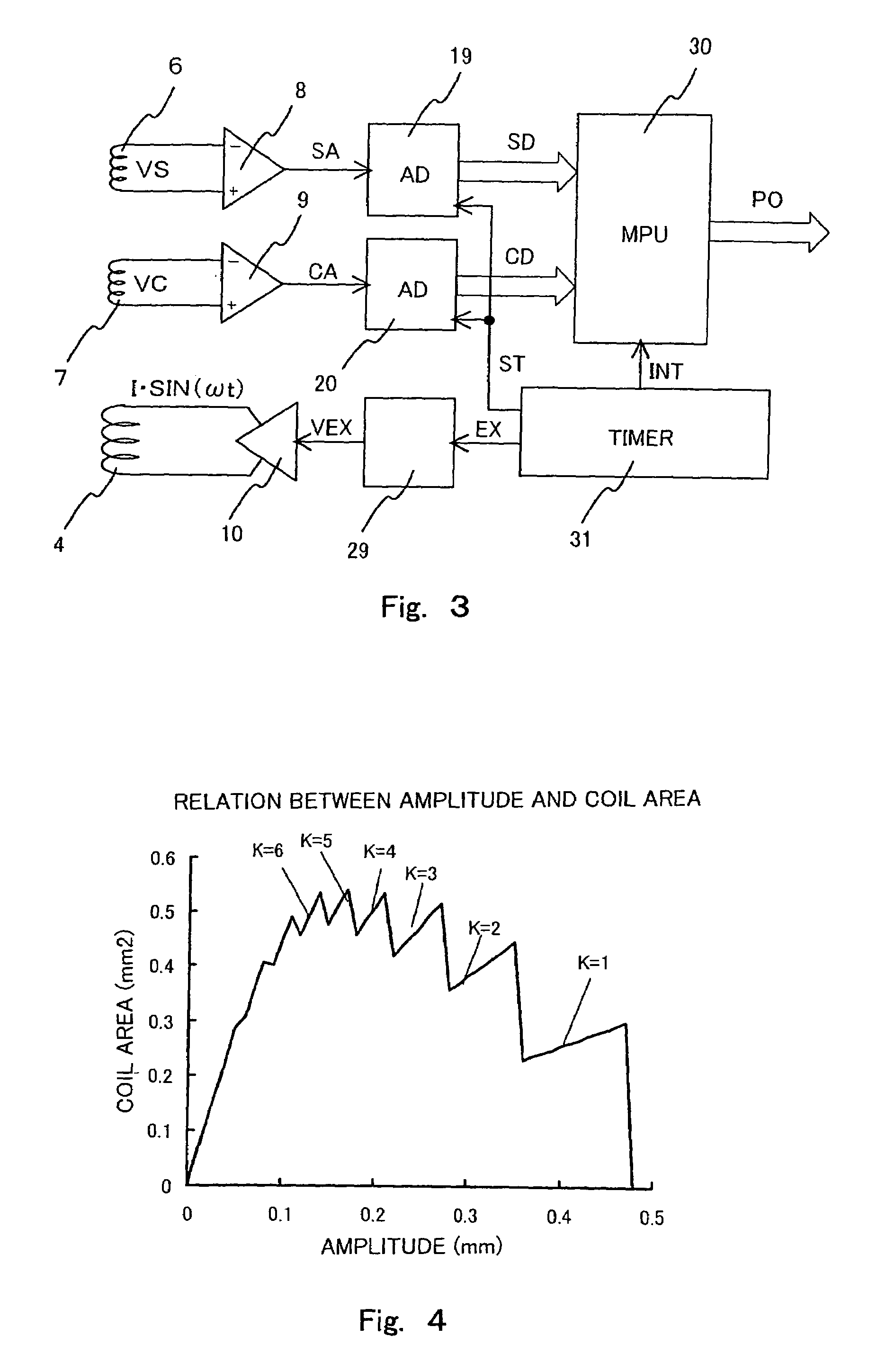Electromagnetic induction type position sensor
a position sensor and induction type technology, applied in the field of electromagnetic induction type position sensors, can solve the problems of reducing the detection accuracy, not being able to detect highly accurate positions, and using permanent magnets
- Summary
- Abstract
- Description
- Claims
- Application Information
AI Technical Summary
Benefits of technology
Problems solved by technology
Method used
Image
Examples
second embodiment
[0031]FIG. 5 is a diagram showing a sensor substrate according to a In a sensor substrate 40 of FIG. 5, there are arranged at regular intervals sinusoidal conductive pattern groups 32, 33, 34, 35 in which one group is composed of two pairs of conductive patterns corresponding to K=2 in the graph of FIG. 4. Further, the sinusoidal conductive pattern groups 32, 33 are connected in series to the sinusoidal conductive pattern groups 34, 35, respectively, thus forming two coils 61, 62. Thus, in the sensor substrate 40, centers of gravity of the coils 61, 62 can be located closer than those of the coils 6, 7 in FIG. 2. The closely located centers of gravity of the two coils makes it possible to restrict a decrease in position detection accuracy due to changes in signal amplitude balance and phase difference between the two signals VS and VC even if the sensor substrate is inclined in various directions.
third embodiment
[0032]Next, a third embodiment will be explained. In a sensor substrate 50 of FIG. 6, there are arranged sinusoidal conductive pattern groups 36, 37, 38, 39 in which one group is composed of two adjacent pairs of conductive patterns corresponding to K=2 in the graph of FIG. 4. Further, the sinusoidal conductive pattern groups 36, 35 are connected in series to the sinusoidal conductive pattern groups 39, 37, respectively, thus forming two coils 63, 64. Thus, in the sensor substrate 50, centers of gravity of the coils 63, 64 can be located closer than those of the coils 61, 62 in FIG. 5. However, in the sensor substrate 50, the conductive patterns of the coil 63 are disposed largely in outer peripheral parts where the change in the magnetic flux distribution is relatively great, leading to a disadvantage that characteristics of the two coils tend to be unbalanced.
fourth embodiment
[0033]Next, a fourth embodiment will be explained. In a first layer and a second layer of a sensor substrate 60 of FIG. 7, there are arranged eight pairs of sinusoidal conductive patterns (41 and 51, 42 and 52, 43 and 53, 44 and 54, 45 and 55, 46 and 56, 47 and 57, 48 and 58) having the wavelength λ at regular intervals in a direction (sinusoidal wave amplitude direction) vertical to the movement direction of the scale so that they are sequentially shifted by a regular phase difference π / 4 (λ / 8).
[0034]When one set of patterns is composed of two pairs of sinusoidal conductive patterns adjacent in the sinusoidal wave amplitude direction, four sets are possible, which include a set consisting of the sinusoidal conductive patterns 41, 42, 51, 52; a set consisting of 43, 44, 53, 54, a set consisting of 45, 46, 55, 56; and a set consisting of 47, 48, 57, 58. Four sinusoidal conductive patterns are connected in series so that, when viewed from the front of the sensor substrate 60, it appea...
PUM
| Property | Measurement | Unit |
|---|---|---|
| width | aaaaa | aaaaa |
| width | aaaaa | aaaaa |
| electromagnetic | aaaaa | aaaaa |
Abstract
Description
Claims
Application Information
 Login to View More
Login to View More - R&D
- Intellectual Property
- Life Sciences
- Materials
- Tech Scout
- Unparalleled Data Quality
- Higher Quality Content
- 60% Fewer Hallucinations
Browse by: Latest US Patents, China's latest patents, Technical Efficacy Thesaurus, Application Domain, Technology Topic, Popular Technical Reports.
© 2025 PatSnap. All rights reserved.Legal|Privacy policy|Modern Slavery Act Transparency Statement|Sitemap|About US| Contact US: help@patsnap.com



